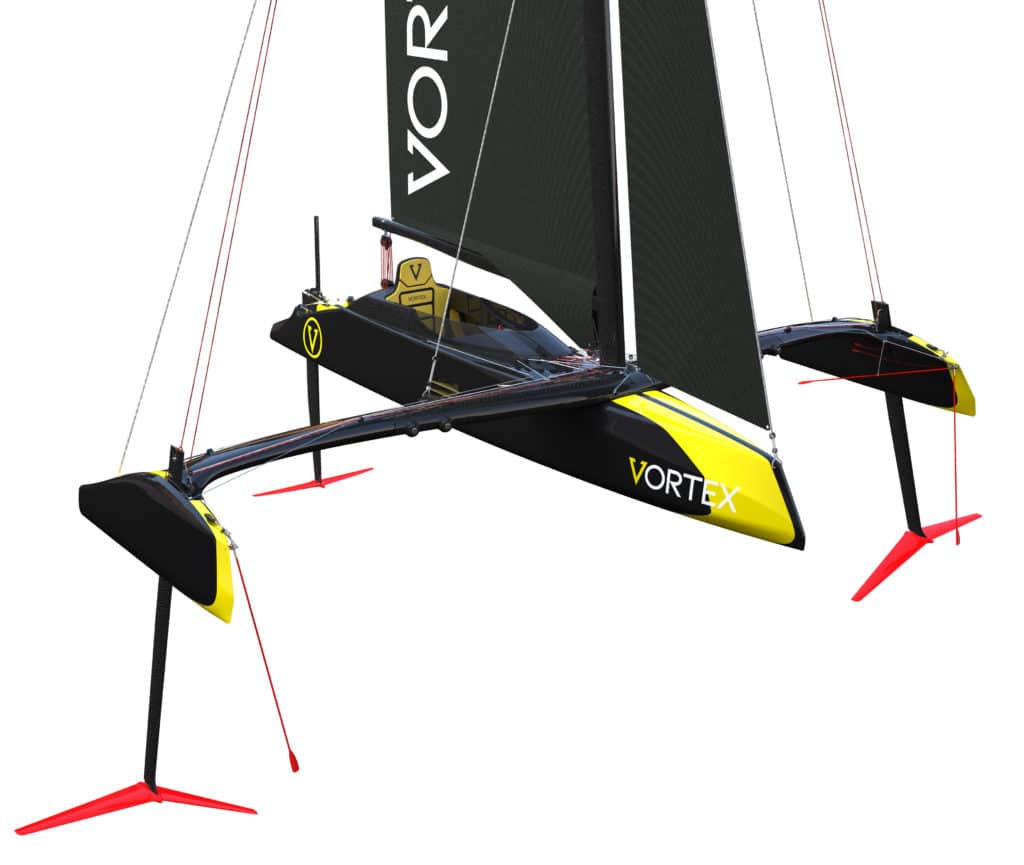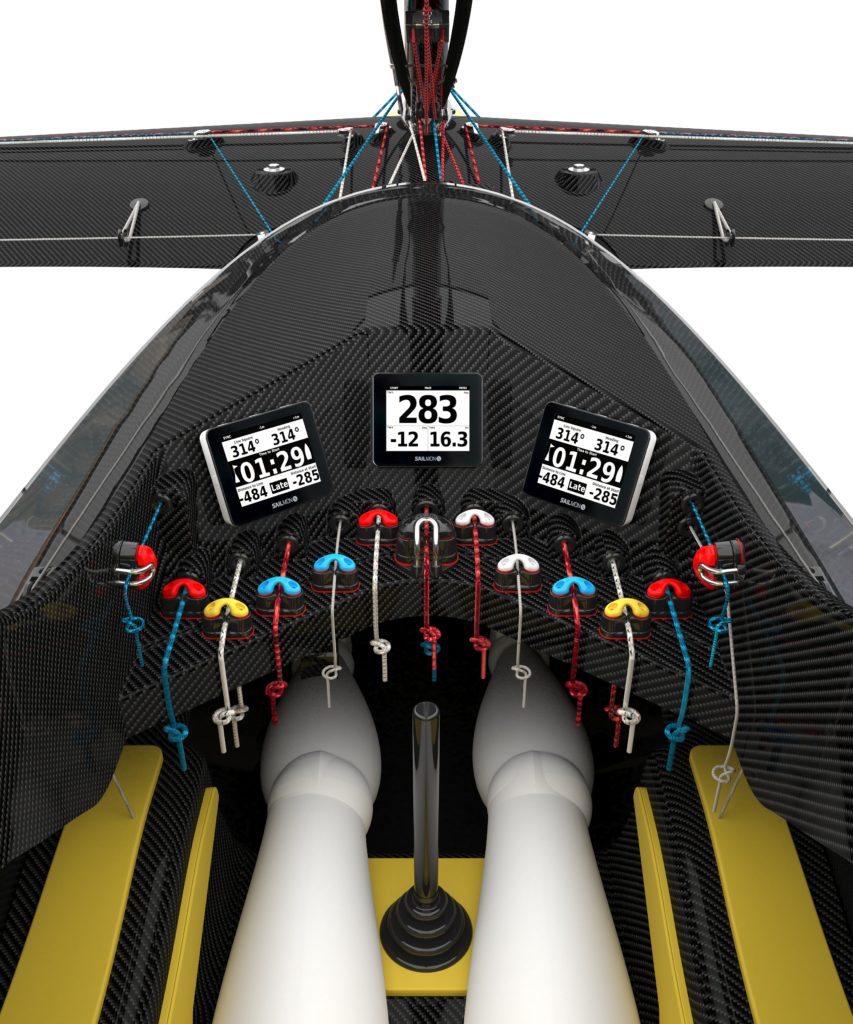
Anyone who has taken to a singlehanded foiling craft along the likes of a Moth or Waszp knows full well the exhilaration of liftoff, the silence of flight, and the breathtaking enjoyment of soaring over the surface and whipping through turns. There’s nothing quite like it, and foiling is here and now. As advancements in foiling and composite construction have continued apace, it was only a matter of time before someone came up with a with a slick new twist. That twist is the Vortex Pod Racer, which McConaghy Boats’ director Mark Evans describes as a “half boat, half flying machine that flies above the water at speeds of 30 knots.”
Thirty knots is plenty fast for the average sailor, but this craft is not necessarily for the average sailor, Evans says—not at the outset at least. “I think the learning curve is relatively small,” Evan says. “Of course, it’s a new skillset. I put it down to a little bit like learning drums for your first lesson.
“When you first sail the prototype, your brain tells you to steer the Vortex with the joystick, but within 30 minutes, you are steering with your feet and flying with the joystick.” The other comparison he can draw is jumping out of your family wagon and into a Porsche or any other high-performance car. “Ninety percent of people could drive a Porsche, but where you will take time to do it well is at high speed, and therein lies the fun,” Evans says. “I see this as the sports car on the water.”
And how do we get to a 17-foot, 330-pound sports car on water? That’s easy. In Zhuhai, China, McConaghy’s composite wizards craft carbon fiber and pre-preg foam core to make the pod, wings, torsional beams and wing fairings. They’ve built more than 3,000 foiling Moths, so they certainly know what they’re doing with their materials and autoclave. When it comes to the systems to make it fly, these too have been exhaustively vetted through the prototype phase. The waterfall of controls lines into the cockpit is a necessity.
“There is always positive and negative in any design, and from a simple concept, we try to keep the complexity out of the build,” Evans says, “but we have to introduce some complexity to enable the pilot to fly. With ease of sailing in mind, and with the loads that this Vortex can generate, we had to add certain mechanical systems that give the Vortex the ability to fly itself.”

The pilot, he says, simply trims all the foils through the joystick and steers with the foot pedals. Iceboaters will know the foot-pedal drill and, in fact, it was hard-water sailing that spurred Evans to launch the Vortex. “The inspiration was from watching the intense speeds achieved by iceboats,” he says, “where a simple pod and a mainsail are balanced by two outriggers. Speeds achieved by these contraptions can easily top 40 knots in 10 knots of breeze.”
Racing sailors will agree that ripping around at top speed is plenty cool and fun but, eventually, there will come a time when you need to reality-check your skills and line up with others. The next thing you know, you will want to fleet-race.
“My vision and goal would be to see 50 class boats on a starting line,” Evans says. “At low speeds, the Vortex would be flying at 12-plus knots, and seeing this amount of boats maneuvering at high speeds would be spectacular. In my mind, it would be just as fun or more fun [than] racing your Porsche on a track day.”
There’s an optional $4,000 electronics package developed with McConaghy’s partners at Sailmon, but Evans says they’re not necessary to sail the boat. “It’s simply a sailing aid, giving the pilot normal feedback, like wind direction, true wind speed, heel and more, but it’s no way to link any of the control systems to fly the boat.”









